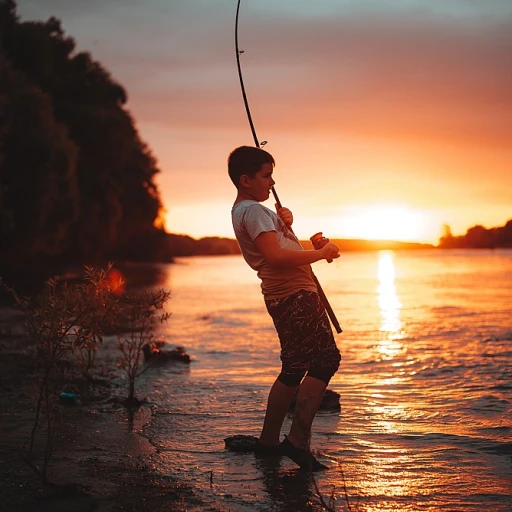
Understanding the lake erie walleye population
Population dynamics of lake erie walleye
Understanding the lake erie walleye population is key for any angler looking to have a successful fishing trip. This famous body of water, stretched across Ohio, Pennsylvania, New York, Michigan, and Ontario, is renowned for its robust walleye population. According to the Ohio Division of Wildlife, lake erie held a whopping 150 million walleye as of 2021. (Source: Ohio Department of Natural Resources).The population of walleyes in lake erie can experience fluctuations due to various factors, including environmental conditions and fishing pressure. Travis Hartman, a biologist with the Ohio Department of Natural Resources, often comments on how favorable weather conditions and strategic fish management have helped maintain the walleye population. For example, the walleye hatch rate in 2018 was one of the highest on record, with nearly 100 million fry produced just in Ohio waters. (Source: ODNR).
Environmental impact on walleye numbers
Environmental factors like water temperature and quality significantly impact walleye numbers. Lake erie's western basin, warmer and shallower compared to its eastern counterpart, provides an optimal breeding ground. It's noted that the ideal water temperature for walleye spawning ranges from 42°F to 50°F. (Source: Western Basin Lake Erie Fishing Report).Interestingly, walleyes prefer rocky or gravelly bottoms for spawning, which are abundant in this part of the Great Lakes. This also impacts their distribution across the lake, with higher concentrations in suitable spawning areas.
Walleye monitoring and research initiatives
Numerous studies and reports by the Ohio Division of Wildlife emphasize continuous monitoring to understand walleye population dynamics. For instance, annual trawl surveys are conducted to estimate the year-to-year changes in juvenile walleye counts, an indicator of future population sizes. Recent surveys pointed out that the walleye population is growing steadily, reaching a 20-year high in 2022, thanks to collaborative efforts in fish management and environmental care.Challenges and controversies
Despite these positive trends, several challenges and controversies surround the walleye population in lake erie. Overfishing and pollution are persistent threats that impact these fish. Lake erie has faced significant issues with algal blooms, which create "dead zones" devoid of oxygen, adversely affecting fish and other aquatic life. Additionally, there’s ongoing debate among anglers about the best practices to ensure sustainable fishing and fair regulations.For a comprehensive read on fishing trips, check out everything you need to know for a successful fishing trip, an insightful guide that covers crucial tips and tricks.
By keeping an eye on the developments and participating in the walleye fishing community, enthusiasts can contribute to and benefit from the thriving walleye population in lake erie.
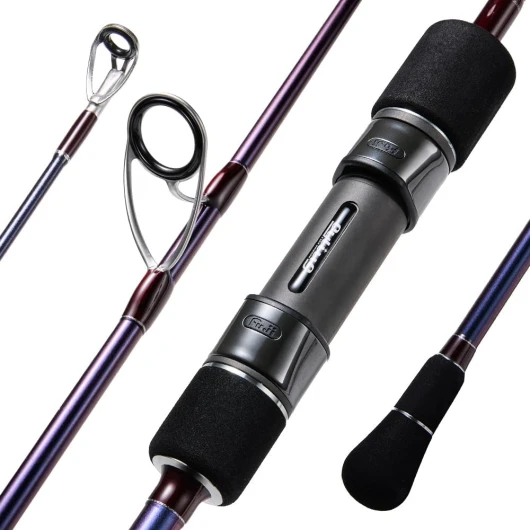
- + Lightweight design for easy handling
- + Durable Toray Carbon Fiber construction
- + Fuji Guides for smooth line passage
- + Compatible with spinning/casting reels
- + Split Rear High EVA Handle for comfort
Best times and seasons for walleye fishing in lake erie
Spring: walleye's prime time
Spring is undoubtedly one of the best times to go walleye fishing on Lake Erie. As the water temperature starts to rise, walleyes move from their deep winter habitats to shallower waters for spawning. According to Travis Hartman from the Ohio Division of Wildlife, the walleye bite peaks during the pre-spawn period in late March and early April when the water temperature hits around 40-50°F (4-10°C). During this time, walleyes are more concentrated and aggressive, making them easier to catch.
Weather and water conditions play a critical role in spring fishing. According to the Ohio Department of Natural Resources, wind direction can significantly impact walleye fishing success. A south or southwest wind can warm the waters faster, drawing walleyes into the shallows. Using worm harnesses and stick baits can be particularly effective during this time as they mimic the forage walleyes seek.
Summer: trolling for trophies
As summer sets in, the water temperature rises between 70-75°F (21-24°C), pushing walleyes back to deeper, cooler waters, typically ranging from 20 to 60 feet. Trolling becomes the go-to technique for summer walleye fishing. Anglers like to use deep-diving crankbaits and spinner rigs with nightcrawlers or minnows.
John Patterson, a veteran charter captain from Port Clinton, emphasizes that speed control is crucial when trolling for walleyes. He suggests maintaining a speed of 1.2 to 2.0 mph to mimic the natural movements of baitfish. Moreover, Patterson recommends paying attention to the thermocline, a temperature gradient in the water column where walleyes are often found. Using electronics to locate this layer can significantly increase your chances of a successful catch.
For those looking for a comprehensive guide on finding the ideal time to fish, check out best time to fish.
Fall: The second opportunity
Fall presents an excellent second opportunity for walleye anglers. As the water cools down to about 50-60°F (10-15°C), walleyes return to the shallower areas where they are easier to catch. This is a time when the fish are packing on weight for the winter, making them more aggressive and more likely to strike at a variety of lures.
Anglers often report great success using jigging techniques during the fall. According to a study by the Ontario Ministry of Natural Resources, 70% of fall walleye catches on Lake Erie come from vertical jigging with soft plastics and live bait.
Winter: ice fishing adventures
Winter walleye fishing on Lake Erie is an adventure in itself. When the lake freezes over sufficiently, typically in the western basin, ice fishing becomes a popular activity. However, it’s crucial always to check ice conditions and adhere to safety guidelines provided by the Ohio Division of Wildlife.
Ice fishing enthusiasts often use jigging spoons and rattle baits. A local angler, Doug Harris, mentions that setting up tip-ups with live minnows can be highly effective in the shallower waters close to the bottom. Ice fishing season usually peaks from January to March, depending on weather conditions.
Top fishing spots in lake erie for walleye
Exploring the western basin
When you think about walleye fishing on Lake Erie, the western basin is often the first spot that comes to mind. This area is renowned for its productive walleye waters, especially near Port Clinton, Ohio, and the islands scattered within this section of the lake. Here, the lake's bottom structure and fertile waters create an ideal habitat for walleyes.
Ontario waters: a hidden gem
While the U.S. side of Lake Erie gets much of the attention, Ontario waters are a hidden gem for walleye anglers. The waters off Point Pelee and Leamington frequently yield impressive catches. The structure from reefs and shoals in these parts provides a natural draw for walleyes, especially during the summer months.
Hot spots around Ashtabula and Geneva
Northeastern Ohio has its own share of prime walleye spots. Both Ashtabula and Geneva offer excellent walleye opportunities, particularly during the late spring and early summer seasons. Anglers often find success trolling along the varying depths, with stick baits and worm harnesses being top choices.
Erie's eastern basin: A different flavor
The eastern basin of Lake Erie, encompassing parts of Pennsylvania and New York, offers a unique walleye fishing experience. The waters here are deeper, sometimes exceeding 80 feet, and the fishing techniques often vary as a result. Anglers typically employ downriggers and deep-diving lures to reach the walleyes lurking in the depths.
Don't overlook the central basin
The central basin, stretching from Lorain, Ohio, to the Pennsylvania border, also offers abundant walleye fishing opportunities. Water temperatures and oxygen levels here provide an excellent habitat for walleyes during mid-summer. Trolling with worm harnesses in the thermocline, where water temperatures are ideal, often proves highly rewarding.
Essential gear and lures for lake erie walleye fishing
Must-have rods and reels for lake erie walleye fishing
If you're chasing lake erie walleye, the right rod and reel combo can make all the difference. Most anglers prefer a medium-action rod, about 6 to 7 feet long, which provides the perfect balance of sensitivity and strength. As for reels, spinning reels are commonly used, with models like the Shimano Stradic Ci4+ and Daiwa BG often recommended by experts. According to Travis Hartman of the Ohio Division of Wildlife, “Having the right equipment helps in feeling those subtle bites and ensures you have the power to reel in a big one.”
Lure Choices: jigs, worm harnesses, and crankbaits
Walleye are known to be a bit finicky when it comes to what they'll bite, but certain lures have proven to be consistently effective. Jigs, particularly ones tipped with live bait like minnows or nightcrawlers, are a staple. Hartman notes, “Jigs work well year-round, especially when fishing the bottom.” Worm harnesses, also known as crawler harnesses, are another excellent choice, especially when trolling. These lures contain multiple hooks and spinner blades, which attract wary walleyes. Crankbaits, such as the Rapala Shad Rap, are effective for covering larger areas and locating active fish.
Electronics and gear: fish finders and trolling motors
Modern technology is a game-changer for walleye fishing. Fish finders are almost indispensable, offering a view of the water column and bottom structure. Brands like Garmin, Humminbird, and Lowrance are top choices among lake erie professionals. In addition, trolling motors, like those from Minn Kota, help maintain a steady speed that is critical for effective trolling. Ohio walleye expert Todd Pletcher emphasizes, “Without electronics, you're essentially fishing blind. A good fish finder can locate schools of walleyes and make your time on the water much more productive.”
Nets, measurements, and care of catch
Once you've hooked a walleye, a reliable landing net is crucial to safely get it into your boat. Look for nets with rubberized mesh, which reduces the chance of tangling and protects the fish's slime coating. It's also important to have a measuring device handy. Ohio regulations allow anglers to keep walleyes that are at least 15 inches long, with a daily limit of six fish per angler. Taking care of your catch is equally important. Keep the fish in a live well or on ice if you plan to keep them. This ensures the fish remains as fresh as possible until you can prepare it for the table.
Safety equipment: life jackets and first aid kits
Never underestimate the importance of safety gear on the water. Life jackets are mandatory onboard and should be worn, especially when the waters on lake erie get choppy. Additionally, having a well-stocked first aid kit is essential. Ashtabula charter captain Jake Brown stresses, “Safety should always be a top priority. A small mishap can turn serious very quickly on the water, so always be prepared.”
Techniques and tips for successful walleye fishing
Mastering the trolling technique
Trolling is a favorite method for catching walleye in Lake Erie. To get it right, you’ll need to understand that the depth at which you troll is crucial. Walleye often hang out around the bottom, so your lure needs to be in that vicinity. According to Travis Hartman from the Ohio Division of Wildlife: “The key is to keep your bait in the water column where walleyes are actively feeding. While they are often at the bottom during the summer, their position can vary based on water temperature and time of year.” Standard depths usually range from 15 to 40 feet.
Pro Tip: Use worm harnesses, stick baits, and crankbaits when trolling. Seasonal variations matter, so check current water temperature reports to adjust your strategies.
Optimizing your casting techniques
Walleye are sensitive to light, and they often move into shallower waters as daylight fades. Anglers say casting near structures like reefs, islands, and drop-offs can be highly effective, especially in the western basin. A great lure choice is the jig tipped with live bait. The trick is to let it sink to the bottom and then slowly lift it. You want to imitate the natural movement of prey.
During winter months, ice fishing enthusiasts find success in the same areas but need to bring the right equipment. Hardy ice augers, shelters, and sonar units become essential as you brave the cold.
Drift fishing for a more relaxed approach
If you prefer a more laid-back method, drift fishing can be equally productive. Let your boat drift naturally with the current while you work your lure slowly. This technique often works best during spring and fall when walleyes are more scattered across Lake Erie’s waters. Keep a close eye on your sonar to spot schools of fish and adjust your drift direction accordingly.
Choosing the right time and condition
Lakes have their quirks. In Lake Erie, you’ll find some seasons are better than others. According to experts, late spring and early summer are golden times when water temperatures are ideal for walleye activity. The spawning season is also a prime time, as walleyes come closer to shore. Early morning and late evening provide the best bites since the fish tend to avoid bright daylight.
Pro Tip: For more tips on making the most of your fishing outings, check out our guide on the best times to fish in freshwater lakes.
Paying attention to regulations and licensing
Lake Erie’s fish population, including walleye and yellow perch, is heavily regulated to ensure sustainability. The Ohio Division of Wildlife, along with the Ohio Department of Natural Resources, sets specific limits and seasons. Always double-check current regulations and purchase the required fishing license before heading out. Fishing charters and local bait shops can be excellent resources for updates.
Remember, the thrill of reeling in a walleye is amplified by using the right techniques. Not only does it increase your catch, but it also makes for an all-around enjoyable fishing experience on Lake Erie. Whether you’re a seasoned angler or a newbie, experimenting with these techniques can lead to a successful outing.
The role of charters and guides in lake erie walleye fishing
Getting the Most Out of Your Lake Erie Walleye Charter
When it comes to maximizing your walleye fishing experience on Lake Erie, a charter service can be worth every penny. The Ohio Division of Wildlife states that Lake Erie houses an astonishingly high concentration of walleyes, making it a prime destination for anglers. However, navigating this extensive body of water and identifying the best fishing spots can be daunting without expert guidance.Why Choose a Walleye Charter?
First and foremost, charter services provide you with experienced guides who know the lake inside and out. Take Travis Hartman, for example, a recognized fisheries biologist with the Ohio Department of Natural Resources. He's one of the many experts contributing knowledge to charter services, ensuring you're fishing in productive areas. According to a report from the Ohio Division of Wildlife, guided charters significantly boost your chances of a successful fishing trip. In addition to local expertise, charter boats are well-equipped with sophisticated gear like fish finders and GPS systems designed to locate schools of walleyes swiftly. This technology offers a significant advantage compared to solo trips where such expensive equipment may be out of reach.What to Expect on a Walleye Charter
A typical walleye charter trip on Lake Erie will last between six to nine hours, providing ample time to catch your limit. Most charters supply essential gear, including rods, reels, and bait, so you don't have to worry about hauling your equipment. They also provide valuable tips on techniques such as trolling with worm harnesses and stick baits, proven methods according to seasoned anglers. Moreover, the best charters focus on delivering a learning experience. They'll educate you on everything from reading water temperatures to understanding the walleye's feeding patterns and how these change throughout the year. As the Western Basin of Lake Erie is notably good for walleye fishing, you'll leverage their invaluable advice on where and when to fish for maximum efficiency.Popular Charter Providers
Some notable charter services include Erie Shores Charters, Fish Crazy Charters, and Port Clinton's Happy Hooker Outdoors. These services are reputable and have received positive feedback from anglers. An excited review from an Ohio-based angler states, "Booking a trip with Fish Crazy Charters transformed my understanding of walleye fishing. It was a game-changer!" indeed, personal stories and first-hand experiences highlight the added value of enlisting a charter service.How to Book Your Trip
When you're ready to book your trip, it's advisable to reserve well in advance, especially during peak seasons like late spring and early summer. Pay attention to what each charter offers and ensure they cater to your specific needs, from group size to the type of fishing techniques you want to learn. Integrating a walleye charter service into your fishing plans will not only improve your catch rate but also enrich your understanding of the species. This comprehensive approach will make every fishing session on Lake Erie both enjoyable and educational.Regulations and licensing for walleye fishing in lake erie
Understanding the rules around walleye fishing
Before you pack up your gear and head to Lake Erie for some walleye fishing, it's crucial to familiarize yourself with the local regulations and licensing requirements. This isn't just about avoiding fines, but also about preserving the fish populations for future anglers. According to the Ohio Department of Natural Resources, each angler must carry a valid fishing license. This applies not just to Ohio, but to neighboring states like Pennsylvania, New York, and Michigan which also have waters in Lake Erie.Limits and measures for conservation
The regulations around the walleye population are strict. For instance, in Ohio waters, the daily bag limit for walleye varies depending on the time of year. From March 1 through April 30, the limit is six fish per day. From May 1 through the last day in February, the bag limit increases to six. Anglers are also required to adhere to the minimum size limit of 15 inches. Such measures help sustain the walleye population, ensuring that there's enough fish for everyone both now and in the future.Walleye specific rules across states
Lake Erie is bordered by multiple states, and each has its own fishing laws. For example, the Pennsylvania Fish and Boat Commission has its own set of rules for walleye fishing. These include slot limits, creel limits, and specific seasons. In New York, the State Department of Environmental Conservation also enforces a minimum size limit of 15 inches and a daily limit of six walleyes. Anglers fishing in Michigan waters must abide by similar laws to maintain the health of the walleye populations.Licensing across different regions
Fishing licenses can be obtained online or through various vendors across the states bordering Lake Erie. For instance, the Ohio Division of Wildlife offers different types of licenses depending on residency status and the duration of the license. Residents and non-residents alike can choose from one-day, three-day, or annual fishing licenses. Make sure to check the specific requirements for the state you'll be fishing in, as licenses are not interchangeable between states.Compliance and its importance
Strict compliance with these regulations isn't just a matter of personal responsibility, it's essential for the health of the entire ecosystem. The Ohio Department of Natural Resources actively monitors and enforces these rules through fishery officers regularly patrolling the waters. They also conduct studies to estimate the walleye population and adjust the regulations accordingly.Impact of fishing charters on regulations
If you decide to take a fishing charter, rest assured that most operators are well-versed in the local regulations. They'll often include the cost of a temporary fishing license in your charter fee and will ensure that all rules are followed during your fishing trip. This not only provides a hassle-free experience but also ensures that your fishing practices are sustainable and legal. For a comprehensive guide to licensed fishing in Lake Erie, don't overlook the official resources provided by the Ohio Division of Wildlife and other state departments. Staying informed will help make your fishing trip enjoyable and legal, contributing to the preservation of the lake's rich marine life.Walleye fishing community and events in lake erie
Connecting with fellow anglers
In the Lake Erie walleye fishing community, camaraderie is a big part of the experience. Facebook groups, local forums, and in-person meetups are common. For instance, the Lake Erie Walleye Trail (LEWT) is an event that brings together walleye enthusiasts from Ohio, Pennsylvania, and beyond. This event, organized by the Ohio Division of Wildlife, promotes not only fishing but also conservation efforts, which ensures the sustainability of the walleye population.
Annual walleye tournaments and derbies
Each year, numerous tournaments and derbies are held on Lake Erie. The Walleye Fall Brawl and the Spring Walleye Slam are two of the most popular. These events draw thousands of anglers to the lake, from Port Clinton to Ashtabula and beyond. Prizes often include cash, boats, and high-end fishing gear, making them highly competitive. Expert angler Travis Hartman, a frequent participant, notes that these events test the skills and patience of every angler, from seasoned pros to enthusiastic amateurs.
Educational workshops and seminars
Several organizations, including the Ohio Department of Natural Resources, host educational workshops and seminars aimed at teaching anglers about the latest techniques and best practices for walleye fishing. These sessions often discuss topics like water temperature and its impact on walleye movement, trolling strategies, and the use of advanced electronics in finding fish. One notable example is the annual Great Lakes Science Center workshops around Cleveland and Lorain, which offer hands-on training for anglers.
Conservation and advocacy groups
Conservation is crucial in maintaining healthy walleye populations in Lake Erie. Groups like the Western Basin Sportfishing Association (WBSA) and the Ohio Division of Wildlife play a pivotal role in these efforts. They organize clean-up drives, habitat restoration projects, and educational campaigns about sustainable fishing practices. The Ohio division of wildlife also closely monitors walleye population levels, ensuring that regulations align with conservation goals.
Kid-friendly events and family-oriented activities
Many walleye fishing events on Lake Erie are designed to be family-friendly, encouraging the younger generation to take up fishing. Events like the Ohio Division of Wildlife's Youth Fishing Derbies often see whole families getting involved. Prizes for children and educational sessions make these events enjoyable and informative. Parents and children alike can learn about local ecosystems and the importance of preserving Lake Erie's natural resources.

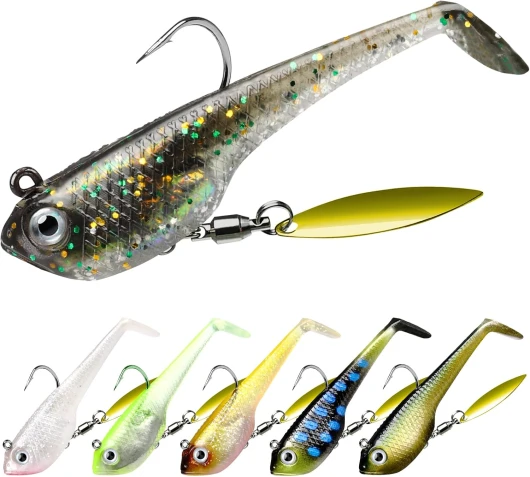
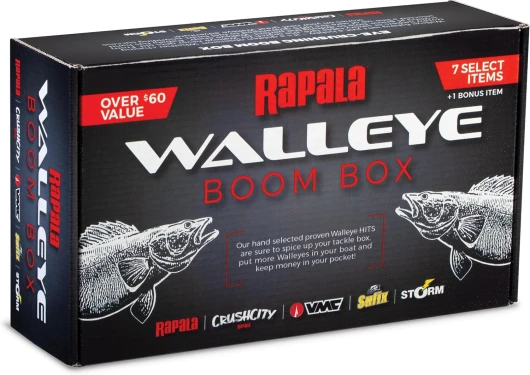
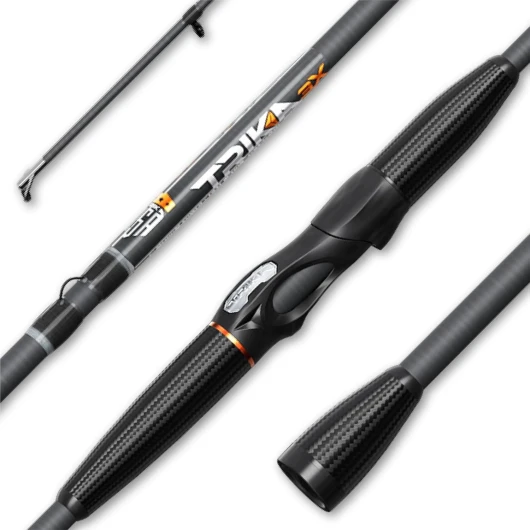
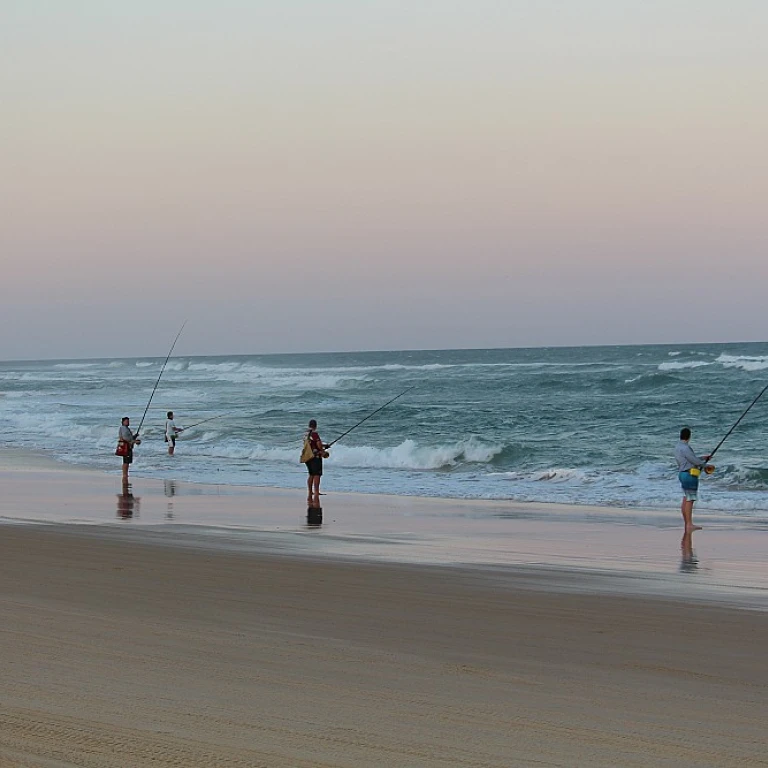
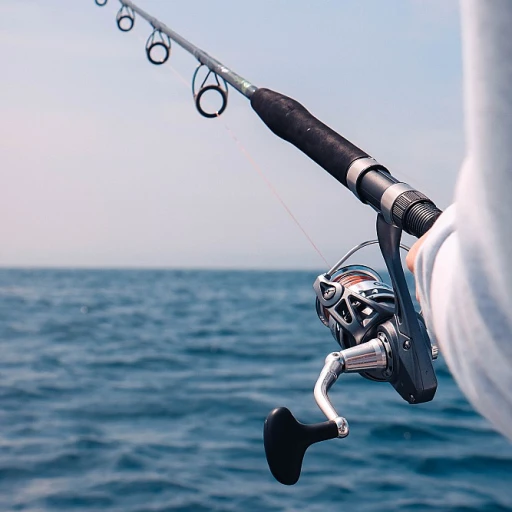
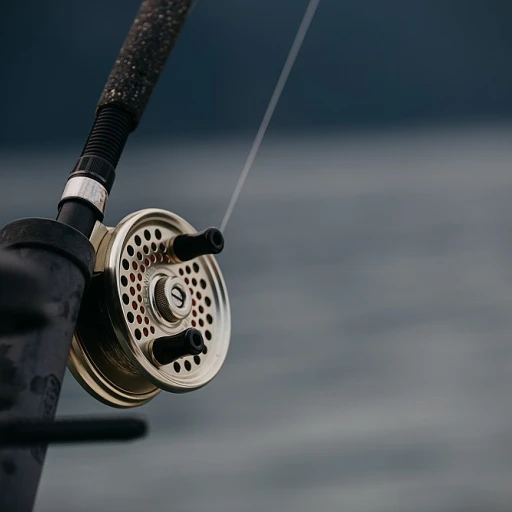
-large-teaser.webp)

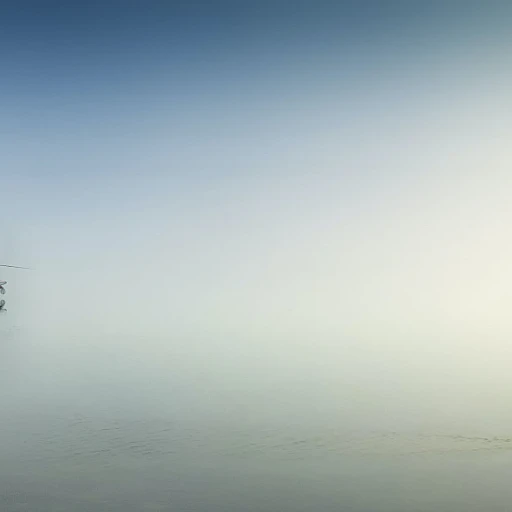
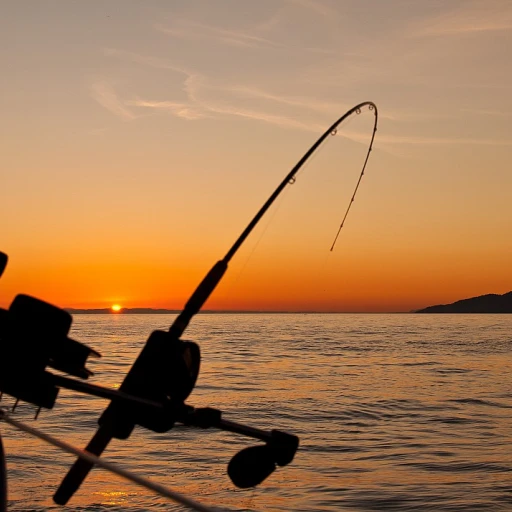
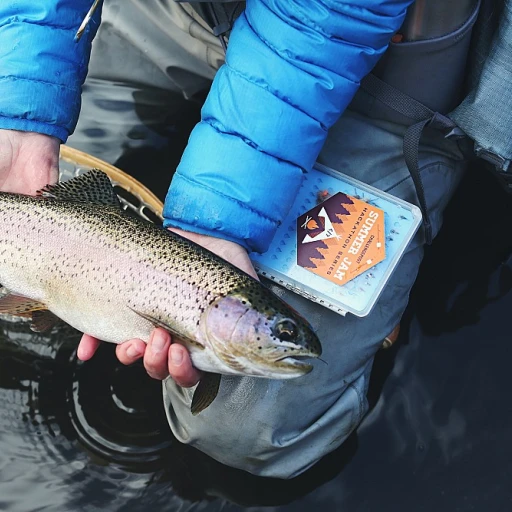
-large-teaser.webp)
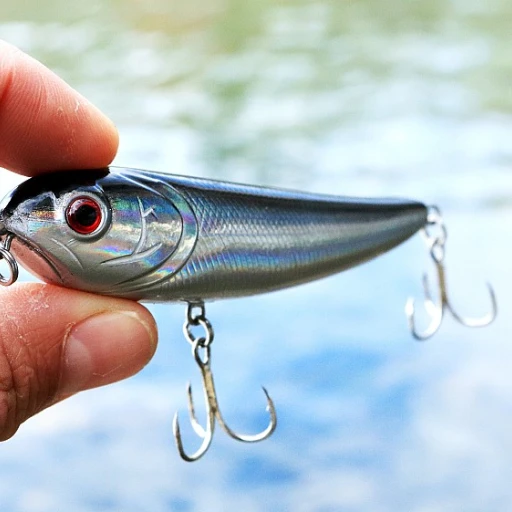
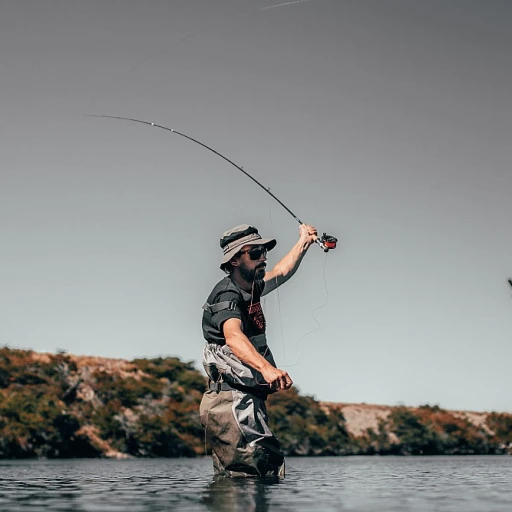
-large-teaser.webp)
